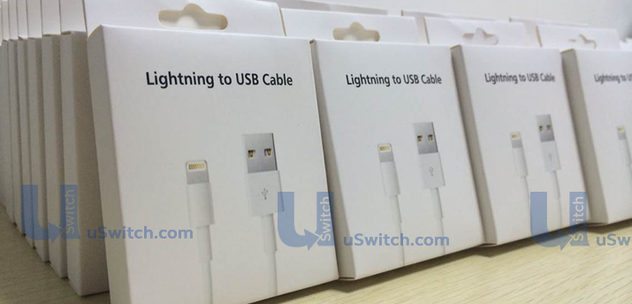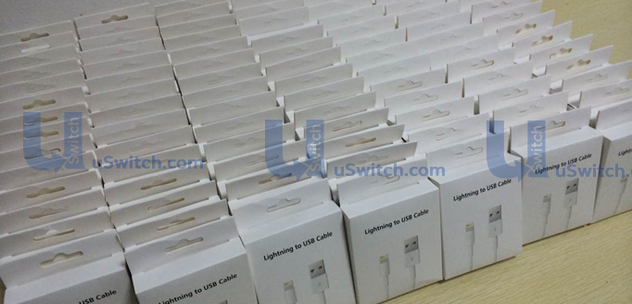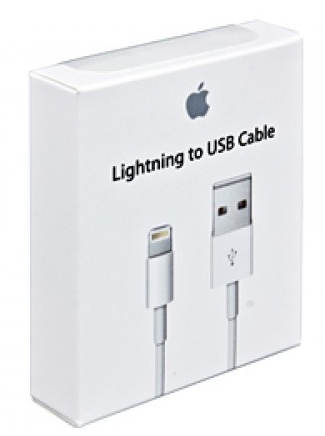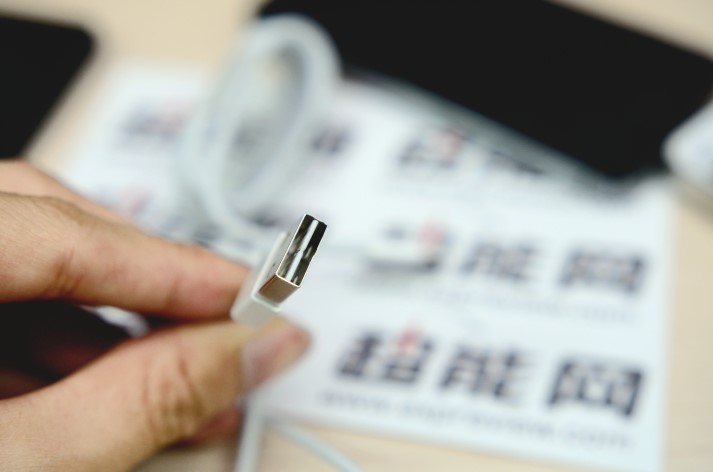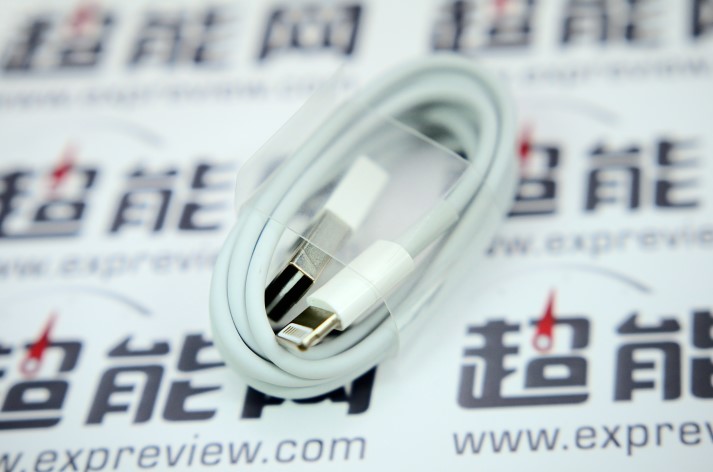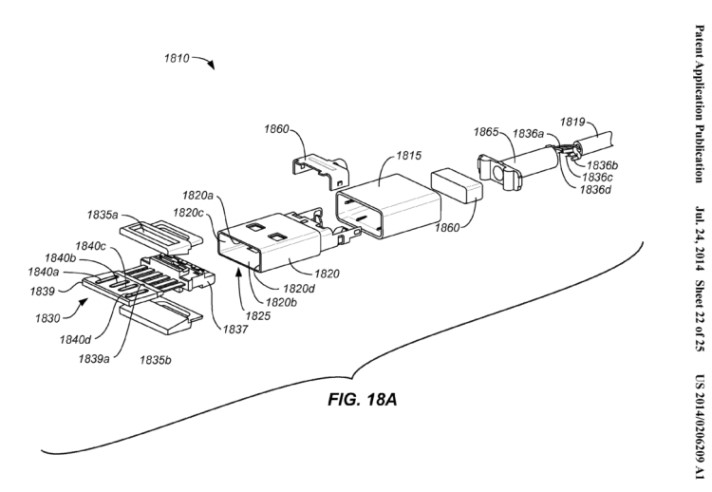This past Friday, a pair of images appeared ostensibly showing off an upcoming Lightning cable variant featuring a reversible connector on the USB side.
Now additional and fairly credible-looking shots have surfaced, supporting the thesis that the new Lightning cable will feature a brand new, smaller and fully reversible USB 3.1 Type-C connector.
More importantly, the latest batch of images for the first time depict a bunch of Lightning to USB cables in their retail boxes, serving as the strongest indication yet that the upcoming new iPhones and iPads will most likely ship with the new cable. One publication was even able to verify that iTunes recognized the cable as an officially sanctioned product…
Check out the retail boxes top of post and below, posted by uSwtich.com. The images support the idea that Apple may be ready to introduce the new cables alongside the big iPhone 6 reveal on September 9.
Guess what’s missing on this picture?
Yeah, the Apple logo.
For comparison, here’s the original Lightning to USB cable retail packaging.
Right below: another image parts leaker Sonny Dickson published on Twitter. The old USB connector can be seen on the left side, right next to the new and reversible Type-C variant on the right.
Again, the modified male USB Type-A has the pins in the middle of the connector, ensuring it can be attached to the metal casing of the connector either way.
And finally, here are even more cable images as spotted by EXPreview [Google Translate], via NowhereElse editor Steve Hemmerstoffer.
According to the publication, which obtained the purported cable, it can be safely used to connect any Lightning-enabled iOS device to a Mac or Windows PC. More importantly, the cable allows for syncing with iTunes, telling us that the leaked part may indeed represent a genuine Apple product.
In addition to the fully reversible design akin to Apple’s Lightning connector, the USB 3.1 Type-C standard provides hundred watts of power and promises data transfer speeds of up to 10Gbps.
The Type-C receptacle opening measures just 8.4-by-2.6mm, putting it close to the USB 2.0 Micro-B standard in terms of size.
Curiously enough, Apple’s patent filed in early-2013 outlines the company’s own reversible USB invention which sounds a lot like the new standard that the USB Promoter Group first announced in December of last year, and detailed earlier this year.
According to the patent abstract, Apple’s take on the reversible USB works with the standard Type A port on any current or future device.
Embodiments can provide reversible or dual orientation USB plug connectors for mating with standard USB receptacle connectors, e.g., a standard Type A USB receptacle connector.
Accordingly, the present invention may be compatible with any current or future electronic device that includes a standard USB receptacle connector.
USB plug connectors according to the present invention can have a 180 degree symmetrical, double orientation design, which enables the plug connector to be inserted into a corresponding receptacle connector in either of two intuitive orientations. Some embodiments of the present invention may be used with or require a non-standard USB receptacle connector.
This support document provides additional information, descriptions and illustrations on Apple’s use of USB connectors across its product families.
At any rate, the new Lightning to USB cable should help reduce user confusion as both the Lightning and USB end are fully reversible — that is, you’ll be able to insert the cable into a USB port, and into your iOS device’s Lightning port, any way up.
The question is, does this matter to you?
